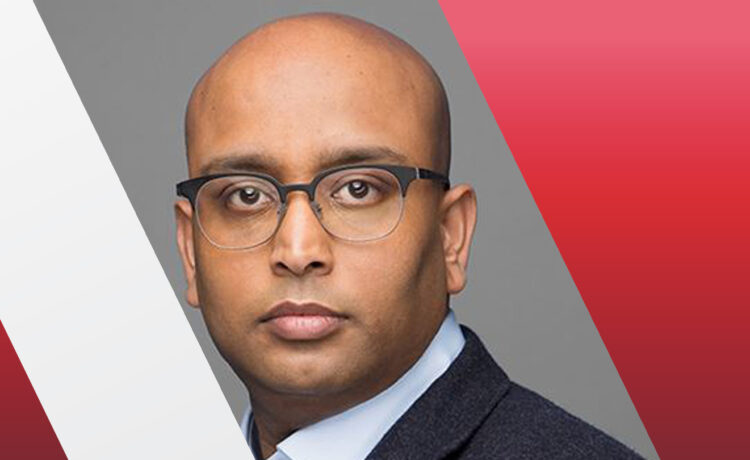Welltower’s acquisition of the United Kingdom’s second largest care home company likely represents the world’s largest senior care deal, British media reported this week.
But in a way, it also represents a narrowing of Welltower objectives.
In an earnings call Tuesday morning, Welltower leaders described the purchase of Barchester Healthcare and the HC-One Group in October as part of a coordinated effort to refocus the company on senior care operations and technology enhancements.
“There is always room in organizations to boost performance by amping up their pace and intensity, and the fastest way to move the dial is to narrow the focus in a maximum-growth, maximum-gained war,” said CEO Shankh Mitra, who noted the company is severing its outpatient property management business.
“The intensity that is needed to achieve our audacious dream of transforming a tech-rich B2C [business-to-consumer] industry, like senior housing, requires the laser focus of a hedgehog and the discipline to say no to hundreds of good ideas,” he added.
Since the second quarter of 2025, however, Welltower has done quite a bit of saying “yes.”
Mitra called it a “watershed period,” in which the company made $23 billion in incremental investments — including $11 billion closed since the end of the third quarter — raising 2025 investments to $33 billion overall.
British buys
In the largest recent deal, Welltower forked over £5.2 billion — nearly $7 billion US dollars — for 284 Barchester assets, including new properties, more mature properties with higher census and some facilities still in development.
UK’s Caring Times said it was “believed to be the world’s-largest care home deal to date,” and other British outlets said the deal surpassed estimates of closer to £4 that had been reported last week.
The two companies had been in talks since 2018, and the longevity of their relationship helped get the actual deal done quickly, Welltower leaders said. Barchester provides nursing care in more than 160 care homes across the UK, in addition to providing dementia care and independent living.
HC-One, meanwhile, is described as offering dementia, nursing and residential care, and is the UK’s largest senior care provider. In that deal, Welltower purchased 100% of the equity ownership of the UK portfolio for £1.2 billion, creating what it called a “a long-duration, growing cash flow stream.”
As part of the deal, HC-One paid back a £660 million loan that had been extended early in the pandemic.
Even before those deals, Welltower reported having more than 46,000 long-term care or post-acute beds across its portfolio at the end of the third quarter.
US invasion
US investors have been snatching up healthcare properties in the UK over the last two years, a phenomenon examined in a Cushman & Wakefield report earlier this year. That firm found much of the interest stems from the UK’s relative lack of long-term care development when compared to the US. That was a theme on Welltower’s call Tuesday as well.
“Given the significant, non-purpose built stock and negative net supply growth over the last 10 years in the UK, we are ecstatic about the significant growth opportunity embedded within this portfolio,” said Nikhil Chaudri, co-president and chief investment officer.
The Barchester purchase in particular gives Welltower room to grow, with 111 assets in a RIDEA performing in the top quartile in the UK but only at about 70% occupancy. That’s because 39 of those are still new-to-market. A second piece of the deal gives Welltower 132 mature facilities at around 90% occupancy, while a third clutch includes 21 assets still being completed.
In all, the firm announced $14 billion in new investments, folding in 46,000 additional units across 700-plus communities in 50 different transactions. Most of those deals were sourced off-market, said WHO, with 16 in the UK, two in Canada and the remaining 32 in the US.
“I expect that with our narrower focus and relentless pursuit of better outcomes, the transactions announced today will fundamentally enhance the long-term growth of potential of our company’s earnings,” he said.
On Monday night, Welltower announced it had adjusted its 2025 guidance, reducing net income attributable to common stockholders to a range of $0.82 to $0.88 per diluted share from the previous range of $1.86 to $1.94. But the company increased its guidance on full year funds from operations from $5.24 to $5.30 per diluted share, up from $5.06 to $5.14.
Adding tech team, new incentives
Also Monday, Welltower announced a series of incentives meant to create executive and frontline stability.
An “all-in” incentive structure for the company’s top five executive officers aims to promote long-term continuity. Each agreed to receive a $110,000 annual base salary but no other compensation for the next decade, instead awaiting an equity payout in 2035 — only if the total shareholder return performs well compared to key indexes.
Key senior housing operators and managers also will take a significant portion of their incentive fees in Welltower stock, the company said.
And for building level teams, the company announced the creation of $10 million in annual Welltower Fellowship Grants to provide direct financial recognition of frontline staff, driven by KPIs including resident satisfaction & care quality.
Welltower also added four new corporate team members tasked with creating a tech quad that will be tasked with creating a technology ecosystem that delivers “a killer value proposition for residents and site level employees.”
It will build on the data science Welltower has developed over the last five years, Mitra said in a second press release on the formation of Welltower 3.0.
“We believe that as an operating company within a real estate wrapper, the continued evolution of our technology ecosystem through WBS [the Welltower Business System] is paramount to enhancing our growth trajectory,” he added. “It is critical that we constantly re-invent ourselves from within or risk being disrupted from the outside.”




